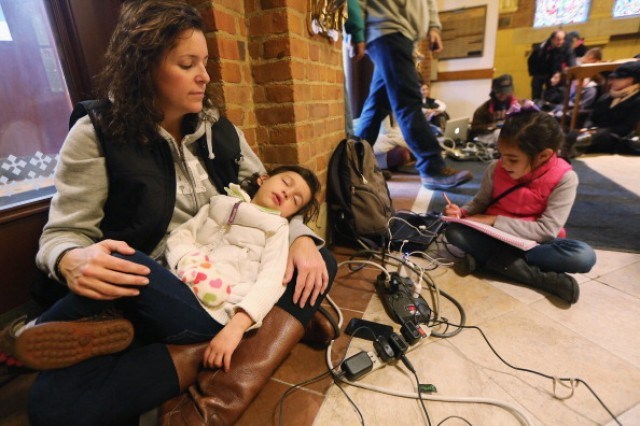At this moment Hurricane Sandy may be miles away from New York City, but for many New Yorkers the worst part of the storm is just beginning. For Latinos in the region, rebuilding and getting back to their daily routine is proving to be more difficult than expected.
“I had no idea it was going to last this long,” says Marco Macal, 47, a chef who works at a restaurant in lower Manhattan that remains close due to flooding and lack of electricity.
With power outages in parts of New Jersey and New York coupled with limited public transportation, many were left stranded in their homes wondering when they will be able to go back to work.
“They haven’t told me when it’s going to open again. I need to pay rent and buy food for my family and I can’t do that if I’m not being paid,” Jacal vented. He says if the restaurant doesn’t open in the next week, he will be forced to find a new job.
RELATED: Tips from the Red Cross on how to survive Hurricane Sandy
For many Latinos like Jacal, having days off means a smaller paycheck come payday and that often forces many to cut back on expenses just make rent at the end of the month.
On Wednesday, thousands of New Yorkers returned to work, only to find themselves in bumper to bumper traffic or having to walk for hours just to get home.
Maria Reyes, 38, who lives in Queens, says she is ready to go back to work as a housekeeper in Brooklyn; the only problem is there is no way for her to get there.
“I’m in a situation where it’s almost impossible to get to work,” says Reyes, who on a daily basis takes the train for over an hour just to get to her job. Because the trains that she usually takes are currently out of service, her only option is to walk or take a taxi — which she says is beyond her budget. “I’m in a situation where I’m practically out of work and I doubt that the trains will be back in service by next week.”
To extend a hand to families like the Reyes, local community centers are providing shelter to local residents who are without power or running low on resources.
“It’s been a mix of emotions,” explains Javier Valdes, a deputy director for Make the Road New York who says he has seen dozens, often hundreds, of people visiting the different locations around the city. “People are constantly coming into our centers looking to charge their phones, get some food and even use our bathrooms.”
The death toll currently accounts 80 deaths, with 37 of the victims in New York City. Over four million homes and businesses across 12 states are still without power, according to the Department of Energy. The forecasting firm Eqecat estimates that the storm will reach costs of $50 billion dollars.
by Ignacio Torres,



